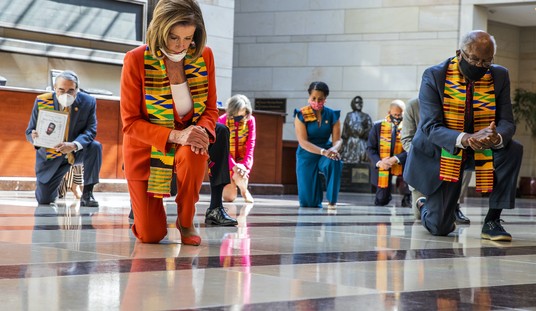The National Labor Relations Board yesterday issued three decisions that will make it easier for workers to unionize even when a majority of workers prefer to remain non-union. The Wall Street Journal reports:
In a case known as Specialty Healthcare, the board decided that the union could seek to organize a group that consists only of nursing assistants, a blow to the employer, which wanted to include other nonprofessional employees in the unit. Employer groups had been concerned the board would use the health-care industry case to endorse the formation of so-called mini-bargaining units in a range of workplaces, which they said would allow unions to target small groups of workers the unions know would support unionization. …
In another case known as Lamons Gasket Co., the board decided that employees opposed to a union would no longer have the right to immediately challenge the recognition of a “card-check” election—in which employees sign cards to show their interest in joining. Unions prefer the card-check method over secret-ballot elections.
In the third case, known as UGL-Unicco Service Co., the board decided that after the sale of a unionized company, the new owner, the employees or a rival union can’t immediately challenge the incumbent union’s right to represent the workers. Instead, there must be a “reasonable period” of time for collective bargaining to have “a fair chance to succeed,” the board’s Democrats decided.
As might be expected, all three decisions were made along party lines. The three Democrats on the board voted in favor, while the lone Republican voted against. They also came at a particularly interesting time: NLRB Chairman Wilma Leibman’s term expires this Saturday. President Obama has already named as the new chair another Democrat already on the board — Mark Pearce. With Leibman’s departure, the board consists of just three members — concentrating power in the hands of an even smaller number of unelected bureaucrats.
Of the three decisions issued yesterday, the first, in particular, is troubling. Current law defines the appropriate bargaining unit as similarly situated workers who share a community of interests, but the new rule allows unions to define the appropriate bargaining unit as workers with the same job title. Such micro unions disenfranchise those employees who do not want a union; prevent career advancement by limiting workers to the work entailed under specific job titles; and redistribute wages from the non-union employees outside the micro union to the union employees within the micro union. James Sherk, a labor economist at The Heritage Foundation, explains each of these downsides:
Disenfranchising Workers. Under the board’s proposal, unions could organize micro unions at businesses in which most workers oppose unionizing. For example, most workers might oppose unionizing at a store in which the union had majority support among cashiers. The union could organize a unit representing just cashiers, excluding shelf stockers and greeters. This would allow unions to gerrymander bargaining units to create one in which they have majority support. …
Preventing Career Advancement. Unions insist on work rules that strictly define what work can and cannot be done by members of the bargaining unit. Separate unions representing individual job titles would prevent companies from training workers for and assigning them to jobs in different bargaining units as needed.
For example, the machinists union would not allow a company to train a welder to operate their machines. They would insist that their members perform all precision machine work. This would limit employees’ opportunities to learn new skills and employers’ ability to assign workers where they are needed most, which would both reduce productivity and limit workers’ opportunities to advance within the company. …
Redistributing Wages. Permitting micro unions would also enable unions to redistribute wages from nonunion workers to union members. Unions know that companies in competitive markets have little ability to increase total pay. Businesses cannot raise prices without losing customers. Consequently, unions typically negotiate contracts that keep average pay—and total costs—constant. Unions reward their supporters by redistributing wages within the company. Union contracts typically give lower pay to high performers and higher pay to less productive workers.
If the NLRB allows micro unions, they will also attempt to redistribute wages to their members at the expense of nonunion workers. Micro unions will threaten to strike to get higher pay for their members, forcing companies to choose between a strike shutting down their operations or giving higher pay to unionized units and lower pay to nonunion units. Faced with such a choice, many employers would give in to union demands. This would also put pressure on nonunion employees to unionize to prevent their pay from being redistributed.
Sherk points out that multiple micro unions within a company also increase the cost of business operations because they require employers to negotiate multiple collective bargaining agreements.
But the largest problem with the new NLRB rules has to do with job creation — purportedly the president’s top priority. In general, employment in unionized businesses grows 3 percent to 4 percent more slowly than employment in nonunionized firms, according to Sherk. To promote unionization for the sake of unionization — and not because workers really need or want to unionize — at a time of more than 9 percent unemployment makes little sense and belies the NLRB’s pro-union agenda — an agenda its three Democratic members will pursue even at the expense of the nation’s agenda to create jobs and grow the economy.








Join the conversation as a VIP Member